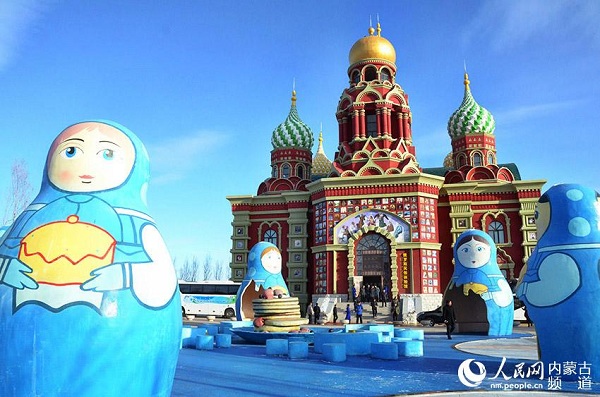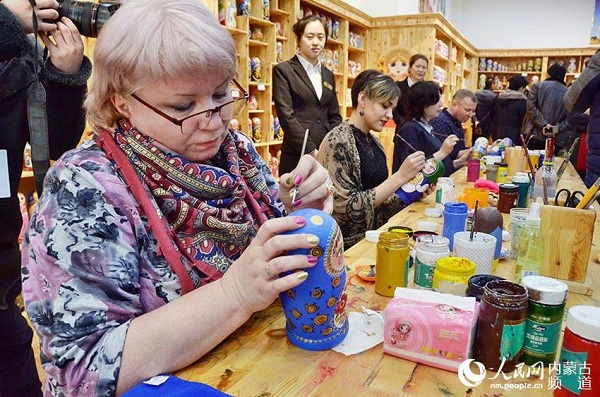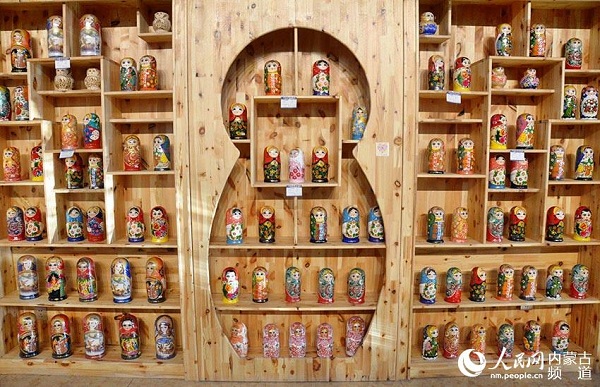Discover matryoshka dolls in Manzhouli
 |
|
Russian-style architecture on the matryoshka-themed square in Manzhouli, Hulunbuir League, Inner Mongolia autonomous region. [Photo/people.cn] |
The matryoshka square, measuring an area of 540,000 square meters, is adorned with one 30-meter-high matryoshka doll painted with three female images from China, Russia and Mongolia facing different directions. As the world’s largest matryoshka doll, it contains a church, a Russian restaurant, and a music hall in an area measuring 3,200 square meters.
The square also contains around 200 small matryoshka dolls and some Easter eggs painted with distinctive images.
When walking on the square, visitors can experience the craftsmanship of matryoshka dolls, and Russian snacks and desserts at various workshops.
The matryoshka doll, also known as a Russian nesting doll or Russian doll, is a set of wooden dolls of decreasing size placed one inside another. The name "matryoshka", literally "little matron", is a diminutive form of female Russian first name.
A set of matryoshkas consists of a wooden figure which separates, top from bottom, to reveal a smaller figure of the same sort inside, which has, in turn, another figure inside of it, and so on.
The first Russian nested doll set was made in 1890 by Vasily Zvyozdochkin from a design by Sergey Malyutin, who was a craftsman at Abramtsevo. Traditionally the outer layer is a woman, dressed in a sarafan, a long and shapeless traditional Russian jumper dress. The figures inside may be of either gender; the smallest, innermost doll is typically a baby made from a single piece of wood.
Much of the artistry is in the painting of each doll, which can be very elaborate. The dolls often follow a theme; the themes may vary, from fairytale characters to Soviet leaders. Matryoshka dolls are often referred to as "babushka dolls", babushka meaning "grandmother" or "elderly woman".
 |
|
Russian artisans paint matryoshka dolls at a workshop in Manzhouli. [Photo/people.cn] |
 |
|
Matryoshka dolls at a workshop in Manzhouli. [Photo/people.cn] |



 Print
Print Mail
Mail





